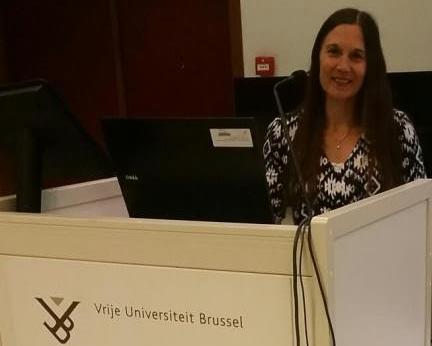Barbara Ward
DISSERTATION TITLE:
Trauma: It’s not the soul of your life: RE-CONSTRUCTING CHILDHOOD TRAUMA AND THE ROLE OF STORY SHIFTERS IN GENERATING ALTERNATIVE NARRATIVES
Sometimes adults who have experienced trauma in their childhood get ‘stuck’ in what happened to them, in that they feel it holds them back or it takes over their life. As one person said, it became the ‘soul of his life’. In our lives, we have many stories about our experiences and who we are. These stories can shift over time, depending on other experiences we have. How do the stories we have about trauma shift to help us get ‘unstuck’? What elements are involved in making this happen?
This qualitative research focuses on the trauma story, and several key elements emerge that can be considered as “Story Shifters”; factors that have the potential to minimize or silence Victim Voices and engage Resilient Voices. Two dimensions of the discursive context facilitate the Story Shifters.
These include Relational Activity, and Culture and Linguistic Elements. Each has specific factors that create the context for the story shifting and provide space for discourses that are not rooted in the dominant ones, but allow for the alternative voices to emerge.
A theoretical Story Shifter Framework was developed to represent what was learned from the trauma stories in this research. The Relational Activity dimension of the Story Shifter Framework refers to any meaningful social interaction, both verbal and non-verbal, that contributes to making a meaningful difference in one’s sense of belonging, sense of connection or personal agency or identity, and where space is opened up for the trauma story to have alternate meanings that are not embedded in the dominant discourses of trauma. Sharing the story with others while engaged in relational activity that is meaningful to those participating provides meaningful connections and social interactions especially in safe and trusting relationships, such as those with close friends, practitioners and mentors. This process generates an opportunity to experience alternative perspectives and creates pathways for Resilient Voices to become stronger, whereby they could be expressed, explored, and validated further. In turn, the Victim Voice of the dominant discourse of trauma can be minimized, silenced or transformed.
The discursive contexts of Culture and Linguistics are the cultural and language aspects that make a difference by generating alternate discourses, often through relational activity. The Story Shifters under Culture and Linguistics include Knowledge Generation, Media, Social Constructs and Language. Knowledge generation occurs within a culture’s social constructs and uses a language informed by the culture. All the Story Shifters here connect and relate to each other within the discursive context of Culture and Linguistics.
Knowledge and social constructs are generated, and shared, through language and often through media, that was unknown previously to the people involved in the relational activity. It is different knowledge that makes a difference. It can occur in the educational or therapeutic setting, or in social interaction where experiences are shared which in turn generate new knowledge for those involved that contributes to making a difference. The new knowledge can come from images and constructs portrayed in the media, which potentially lead to shifts in the re-construction of trauma.
As in the Relational Activity Story Shifter, the Resilient Voices become stronger as the Victim Voices become weaker or silenced as people realize they are not alone in their “suffering” and learn about how others have coped and maintained hope.
This research revealed that the Story Shifter Framework holds meaning to members of our community and society, for they have opportunity to contribute to being a Story Shifter through their discourses with others, and by creating a discursive context that allows for the work of the Story Shifters to take flight. Any member of society can make a difference in contributing to the creation of an alternate story with strong Resilient Voices for those who as children/youth have experienced trauma. The Story Shifter Framework also is relevant to the therapeutic process, with opportunities to hear all the voices (not just the victim voice) and opening space to shift identity into one that is aligned with the Resilient Voices.

- Dissertation (2.24 MB)
- Dissertation Table of Contents (346.72 KB)
